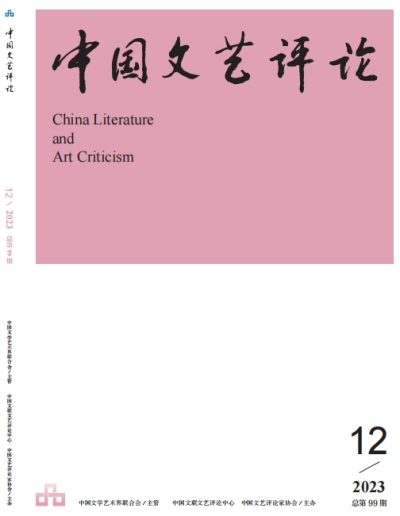
Theoretical exploration
■ The Aesthetic Education towards Humanistic Education (PP. 4–12)ZHOU Xian
Abstract: Aesthetic education depends on arts, but fundamentally aesthetic education is the education of humanity. In the field of aesthetic education in universities, the skillfulness of art and the spirituality of humanity are always in a certain state of tension which highlights the complicated relationship between the Tao and skillfulness of aesthetic education. Facing the challenges that have appeared in the new era, how to develop and enhance aesthetic education, and how to go beyond the low-level aesthetic education of art skill training and art appreciation towards the upbringing of humanity is a basic direction. To this end, this article raises some key issues about the aesthetic education as education of humanity and explores possible paths for the integration of the humanities and the arts.
Keywords: aesthetic education, education of humanity, upbringing of humanity, Taoist-technical integration
■ A Brief Discussion on the High-Quality Development of Internet Literature and Art (PP. 13–21)WEI Yi
Abstract: Since the beginning of the new era, internet literature and art have shown an upward tendency, and the main theme and positive energy in cyberspace have become even more vigorous, reflecting a new role and showing a new atmosphere in repaying the people and serving economic and social development. To promote the high-quality development of internet literature and art, we should study and implement Xi Jinping's cultural thought in depth, leverage the "two advantages" of literary union organization, establish a mechanism for the production and dissemination of refined internet literature and art products, and produce more healthy and high-quality works of internet literature and art. We should also grasp the dissemination of internet literature and art so as to generate a large flow of positive energy in literature and art, enhancing the spiritual strength of the people. To strengthen theoretical commentary on internet literature and art, we should promote the construction of disciplines related to internet literature and art, strengthen the ideological and value guidance, and advance the construction of the system for supporting and cultivating the talents in the field of internet literature and art. It is also necessary to strengthen the construction of the organizations in the field of internet literature and art so as to play a more extensive role in unity and communication.
Keywords: internet literature and art, excellent work creation, dissemination of Chinese civilization, literary union organization
Special Topics: The Travel of Chinese Literature and Art in the World
■ "Emptiness" (Leere) in Chinese Aesthetics (PP. 22–26)Written by Wolfgang Kubin [German] / Translated by XUE Song & LI Huanyou
■ Walter Benjamin on Chinese Art:Centering on Euro-American Sinology in the First Half of the Twentieth Century (PP. 27–42)YAN Yuezhen
Abstract: Viewing Chinese art in terms of sense of touch and craftsmanship is a distinctive way of discourse for Benjamin, which is also reflected in his views on Chinese painting and calligraphy. It can be said that the emphasis on the sense of touch and the evaluation of Chinese art have coincided and resonated. To scrutinize this context, one needs to restore and examine the Euro-American sinological circles in the first half of the twentieth century. In fact, since the end of the nineteenth century, Chinese painting and calligraphy have been in the vision of European sinological circles. Benjamin's comments on Chinese art cannot be separated from this historical context of sinological research. From the academic interactions in the history of European sinology in the first half of the twentieth century, we can find that Benjamin absorbed the insights of Chinese scholars such as J.P. Dubosc, Yutang LIN, Arthur Waley and Richard Wilhelm, and used them for his own purpose in order to realize his critique of modernity. In commenting on Chinese painting, Benjamin attempts to break through the past prejudices by analyzing the forgotten and neglected experience of Chinese painting. In commenting on Chinese calligraphy, Benjamin, through media archaeology, distinguishes between the different experiences of hand transcription and machine printing. In his exploration of the prehistory of modernity, Benjamin turns his vision to China in an attempt to discover the significance of modernity in traditional Chinese culture. In this sense, the Chinese art tradition and Benjamin's Western cultural reality converge into a single thesis. It is in this sense that Benjamin's narrative of China becomes a symbol that carries coded information to repair the lack of experience caused by the development of Western modernity.
Keywords: Walter Benjamin, China, painting, calligraphy, pre-modern
■ Research on Enhancing the Overseas Impact of Chinese Television Series:Based on the Survey Data from 76 Countries and Regions (PP. 43–56)SI Ruo & PANG Shengnan
Abstract: The overseas dissemination of Chinese TV series has evolved from "borrowing a boat to go out to sea" to "building a ship to go out to sea", with great breakthroughs in dissemination platforms, content, and effects, which plays an important role in enhancing China's cultural influence. Based on research data from 76 countries and regions around the world, this article describes the current status of the overseas dissemination of Chinese TV series from the perspective of the audience, and explores the factors that influence the promotion of cultural influence through the overseas dissemination of TV dramas. It proposes strategies to promote the overseas dissemination of Chinese TV series to enhance its cultural impact, and helps Chinese TV series achieve more effective overseas dissemination.
Keywords: Chinese TV series, overseas dissemination, cultural influence, audience perspective
■ Chinese Painting and Calligraphy Theories in the West (1827–2022) (PP. 57–73)ZHOU Jianzeng
Abstract: The translation of the theories of Chinese painting and calligraphy in the West has gone through four historical stages: Firstly, from 1827 to 1929, the early translation centering on Britain focused on the literature of painting criticism, presenting an initial feature of focusing on the general picture of the overall content but neglecting the translation of specific texts. Secondly, from 1930 to 1959, the translation center shifted from European countries to the United States, and overseas Chinese scholars, as a new academic group, gave a strong promotion to the overseas propagation of Chinese painting and calligraphy theories. Thirdly, from 1960 to 1989, American academics led the academic trend and made a lot of achievements among literature compilation, systematic construction, conceptual interpretation, cases study and thematic analysis, forming a blowout phenomenon in the overseas translation of Chinese art theories. Fourthly, since 1990, the main body of translation has tended to be multinational, and people have constructed a new situation of profound and comprehensive translation by ways of successive, deeper and holistic translations. In the past two centuries, the translation of Chinese painting and calligraphy theories in the West has presented the overall situation of Chinese art theories being discovered, recognized and reproduced in foreign lands, which not only highlights the modernist and global significance of traditional Chinese knowledge, but also implies the direction and specific path of Chinese culture going global.
Keywords: Chinese painting and calligraphy theories, translation, West, a century, research on Chinese art theories abroad
Critical Analysis
■ The Concerto, Miscellaneous and Variation of Tibetan Polyphony:On YANG Zhijun's The Snow Mountain and the Earth(PP. 74–86)GAO Qiang
Abstract: The interpretation of YANG Zhijun's The Snow Mountain and the Earth should refer to the literary tradition of Tibetan writing. The characteristics of faith in Tibetan writing have undergone the evolution process of politicization, mystery and desire, while the form of faith in The Snow Mountain and the Earth, with singing and music as its core, is a real belief formed in and feeding back the secular world. Different from the extreme and romantic narrative mode of binary opposition in Tibetan writing tradition, YANG Zhijun opened up a civilized way in The Snow Mountain and the Earth, which takes development as the core appeal and connects the city with Tibetan countryside, modern and traditional. The Snow Mountain and the Earth describes the complexity and richness of the Tibetan world, full of complicated sounds of various tones. As far as the work itself is concerned, it is not only a concerto of secularity and belief, but also a medley of tradition and modernity. Compared with the whole Tibetan writing tradition, The Snow Mountain and the Earth, which provides a multi-dimensional and brand-new style, is also a veritable variation. The Snow Mountain and the Earth, which cares and thinks about the central proposition of the times, stands up a group of capitalized human images, corrects the declining status quo of wonderful narration and low spirit, and effectively safeguards the noble dignity of literature.
Keywords: The Snow Mountain and The Earth, Tibetan writing, secularity and belief, tradition and modernity, literary dignity
Talk on Literary and Art Creation
■ Imin Ehmeti: Committed to Chinese-Uygur Literature Translation,Constructing a Shared Spiritual Home for the Chinese Nation (PP. 87–94)Interviewed by Baihatiguli Nizak
Random Thoughts on Art
■ Technological Empowerment and Capital Control:A Study on Internet Literature Readers' "Playbour" (PP. 95–107)WANG Wanbo
Abstract: Under the influence of media transformation and technological empowerment, the reading activities of internet literature readers are accompanied by a series of productive labor, primarily including real-time online commentary, data rewards, virtual community construction, textual poaching, and cross-media sound-image transmission and expression. This is a manifestation of "leisure laborization": The readers' "playbour" embodies a dual dimension of leisure and work, highlighting their own division and alienation in the dialectical unity of consumption and production, presenting a contradiction of play and exploitation coexisting. Readers, under the surrender of power and emotional feedback, become free consumers of products but also objects of labor requisition in the capital accumulation process of platform capital. The productive behavior of readers during the consumption process plays a role in promoting the diversification of internet literature operations, capital accumulation, and market expansion. In this process, readers and their productive behavior are continuously commodified. The platform capital utilizes and exploits readers and their surplus value, while readers, in turn, resist its alienating logic through the labor of desire, obtaining certain economic/non-economic returns in the determination of subjectivity. The two engage in a mutual game, continually promoting the development of the internet literature industry.
Keywords: technological empowerment, capital control, internet literature readers, playbour, productive behavior
Interview with Renowned Experts
■ Acting Every Small Character Well and Striving to Be a "Capitalized" Person:Interview with Performing Artist NIU Ben (PP. 108–119)Interviewed by HU Linghong
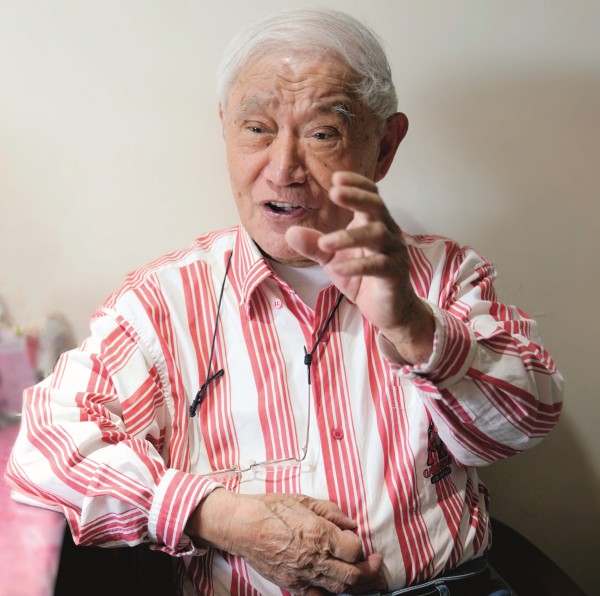
Inside Front Cover
Chinese Literary Critics: PENG Cheng
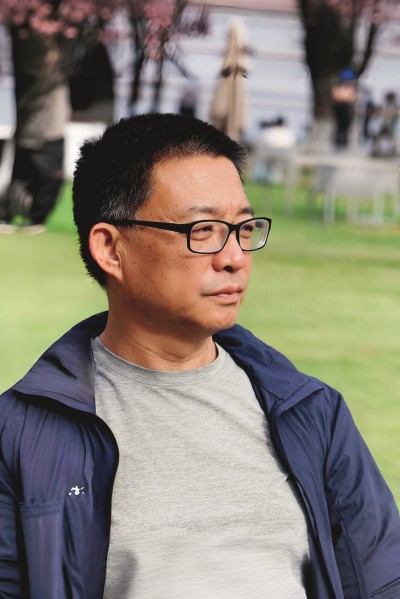
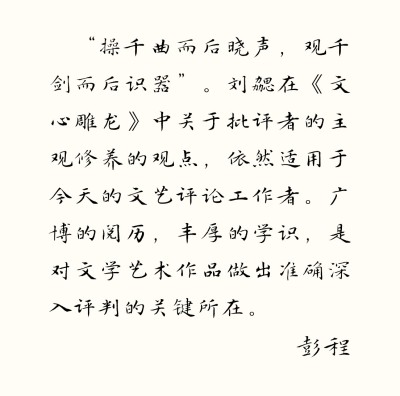
Inside Back Cover
Review of the Second Batch of bases of Chinese Literary and Art Criticism:The base of China Literary and Art Criticism (Shandong University)
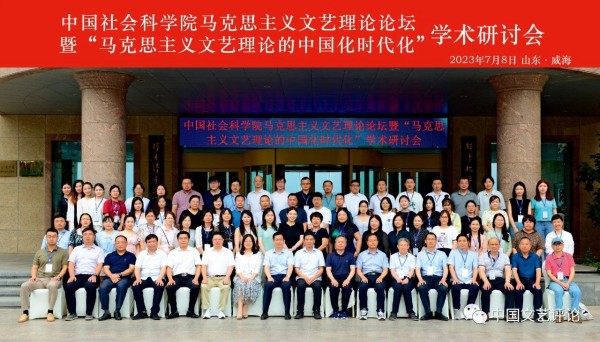
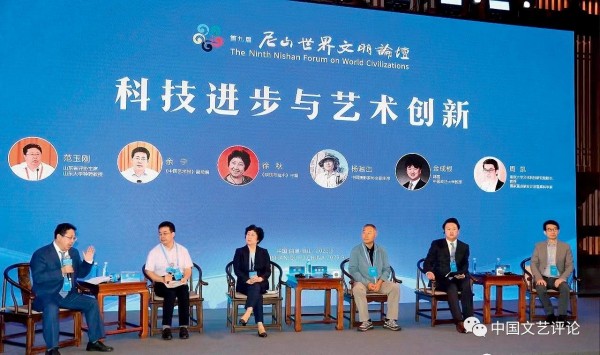
Back Cover
New Book Recommendation: Imagination and Expectation: The Literary Future of the Guangdong-Hong Kong-Macao Greater Bay Area under the Driving Force ofInnovation
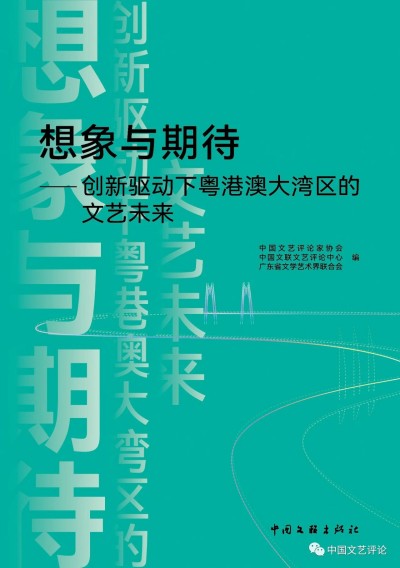
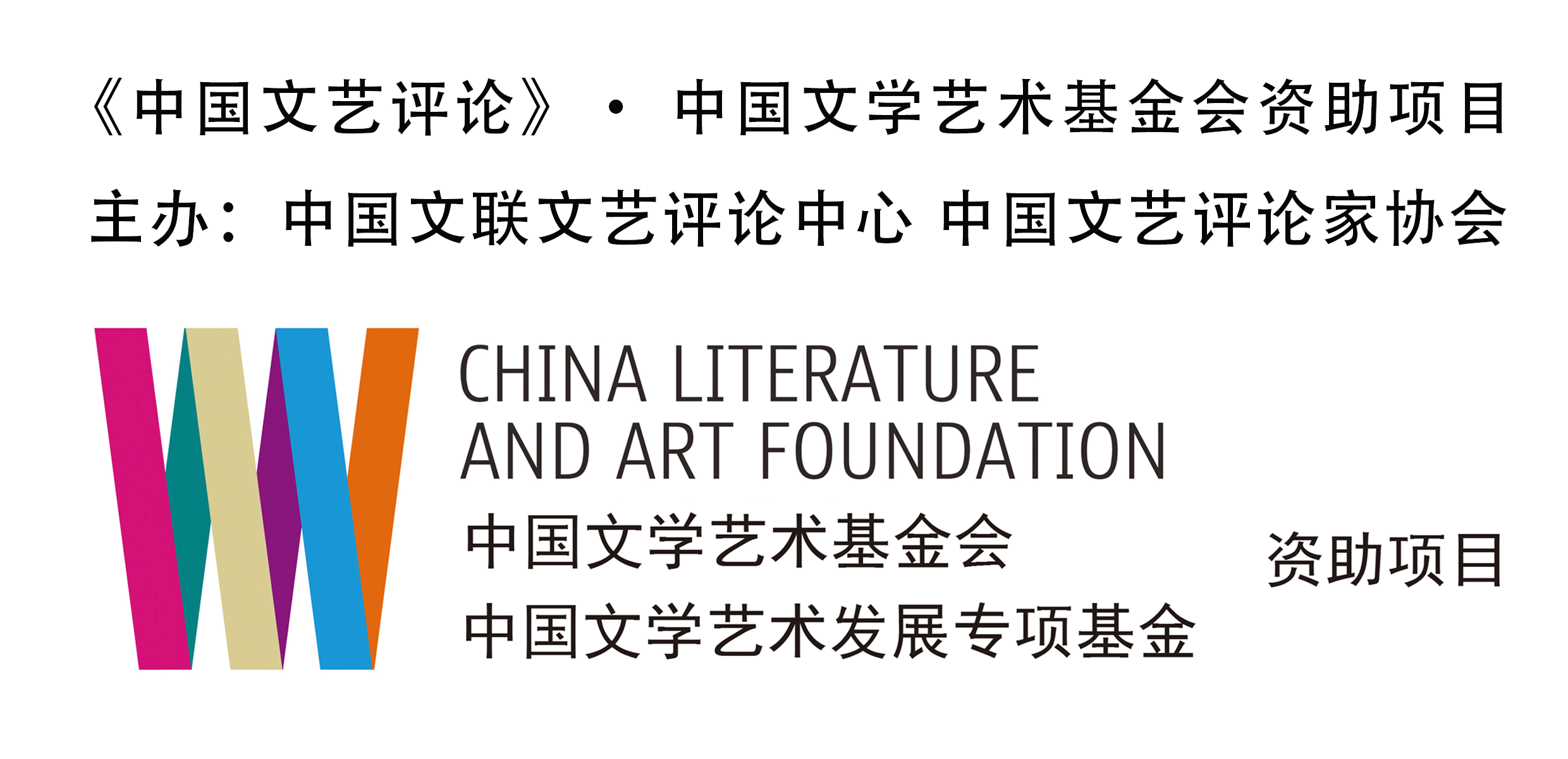

中国文艺评论网
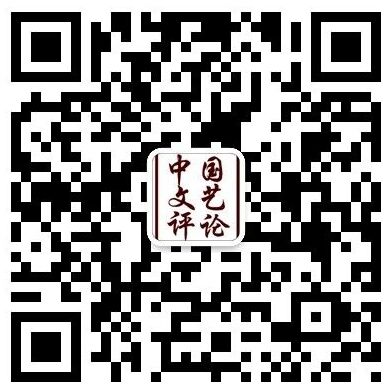
“中国文艺评论”微信公号
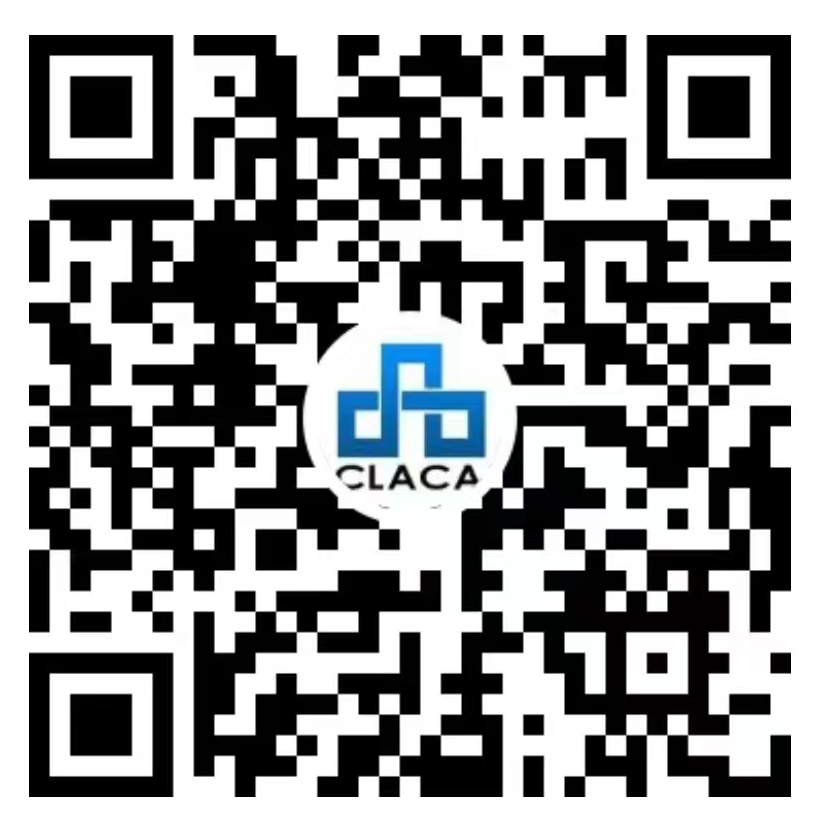
“中国文艺评论”视频号